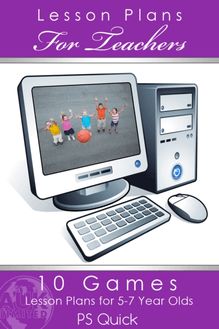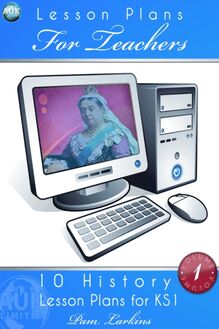-
 Univers
Univers
-
 Ebooks
Ebooks
-
 Livres audio
Livres audio
-
 Presse
Presse
-
 Podcasts
Podcasts
-
 BD
BD
-
 Documents
Documents
-
- Cours
- Révisions
- Ressources pédagogiques
- Sciences de l’éducation
- Manuels scolaires
- Langues
- Travaux de classe
- Annales de BEP
- Etudes supérieures
- Maternelle et primaire
- Fiches de lecture
- Orientation scolaire
- Méthodologie
- Corrigés de devoir
- Annales d’examens et concours
- Annales du bac
- Annales du brevet
- Rapports de stage
La lecture à portée de main
Vous pourrez modifier la taille du texte de cet ouvrage
Découvre YouScribe en t'inscrivant gratuitement
Je m'inscrisDécouvre YouScribe en t'inscrivant gratuitement
Je m'inscrisEn savoir plus
Vous pourrez modifier la taille du texte de cet ouvrage
En savoir plus

Description
Informations
| Publié par | Andrews UK |
| Date de parution | 24 janvier 2012 |
| Nombre de lectures | 0 |
| EAN13 | 9781849899963 |
| Langue | English |
Informations légales : prix de location à la page 0,0250€. Cette information est donnée uniquement à titre indicatif conformément à la législation en vigueur.
Extrait
Title Page
10 SCIENCE LESSON PLANS FOR KS1
Volume 1:
Sorting and Using Materials
Pam Larkins
Publisher Information
10 Science Lesson Plans for KS1 published in 2012 by
Andrews UK Limited
www.andrewsuk.com
This book is sold subject to the condition that it shall not, by way of trade or otherwise, be lent, resold, hired out or otherwise circulated without the publisher’s prior written consent in any form of binding or cover other than that in which it is published, and without a similar condition being imposed on the subsequent purchaser.
Copyright © 2012 Pam Larkins
The right of Pam Larkins to be identified as author of this book has been asserted in accordance with section 77 and 78 of the Copyrights Designs and Patents Act 1988.
Introduction
These 10 Science Lessons cover the programs of study for Key Stage 1 Science as set out in the National Curriculum and are also based around the QCA topic ‘Sorting and Using Materials’ .Within the lessons are opportunities to develop knowledge, skills and understanding from firsthand experience as well as developing investigative skills.
Each lesson includes a list of resources, practical activities, lesson objectives, outcomes and extension activities for cross curricular work that include ICT opportunities as well as assessment.
Lesson 1
Describing Objects and Materials
Learning Objectives and Outcomes
•Children will make simple general observations, using all their senses, about a variety of everyday objects and materials.
•They will describe their observations and simple scientific vocabulary in order to describe objects.
•They will record findings with simple pictures and labels or captions.
National Curriculum Programs of Study
•Sc1 Scientific enquiry: 2a, 2b, 2f, 2g, 2h
•Sc 3 Materials and their properties: 1a, 1b
Introduction
Explain that in this and following lessons we will be learning about materials. Establish meaning of the word ‘material’ so they do not confuse it with ‘fabric’.
Start lesson by sitting in circle. Box of objects is passed round and everyone takes an object, names it and gives one word to describe it. Children keep object taken for later activity.
Main Lesson
Ask children to look at and feel their object in detail. Ask them to think about the softness and hardness of their object. ‘Stand up if your object is very soft/very hard etc.’ Introduce other words such as ‘bendy, squashy, stretchy, see through (transparent), shiny (reflects), dull, smooth, bumpy, rough, warm, cold etc.
Each child passes their object to the next person. Children think about their new object and how they would describe it. Pass the objects on again until children have looked at 4 objects in detail.
Divide children into groups and give each group an object. Children pass the object around and each try to say something different about it. After a few minutes stop children and share their ideas. Can anyone add anything else to the object description from another group? Teacher scribes ideas on flip chart against object named.
Give children six objects per group and let them quickly look at and feel the objects before they put them into a feely bag. In groups children take turns to put hand into the bag and describe the object to rest of group. Can the others name the object from the description?
Children work in pairs with an object of their choice. They draw the object in their books and find 6 words to describe it from a word bank on display.
Plenary
As class play ‘Twenty Questions’ . Collect in all the objects and show children a bag holding a ‘mystery object’ not seen before in the lesson. Children have to guess what the object is by posing their own questions.
Resources
Box with enough different objects for every child to describe and a few extra.
-
 Univers
Univers
-
 Ebooks
Ebooks
-
 Livres audio
Livres audio
-
 Presse
Presse
-
 Podcasts
Podcasts
-
 BD
BD
-
 Documents
Documents
-
Jeunesse
-
Littérature
-
Ressources professionnelles
-
Santé et bien-être
-
Savoirs
-
Education
-
Loisirs et hobbies
-
Art, musique et cinéma
-
Actualité et débat de société
-
Jeunesse
-
Littérature
-
Ressources professionnelles
-
Santé et bien-être
-
Savoirs
-
Education
-
Loisirs et hobbies
-
Art, musique et cinéma
-
Actualité et débat de société
-
Actualités
-
Lifestyle
-
Presse jeunesse
-
Presse professionnelle
-
Pratique
-
Presse sportive
-
Presse internationale
-
Culture & Médias
-
Action et Aventures
-
Science-fiction et Fantasy
-
Société
-
Jeunesse
-
Littérature
-
Ressources professionnelles
-
Santé et bien-être
-
Savoirs
-
Education
-
Loisirs et hobbies
-
Art, musique et cinéma
-
Actualité et débat de société
- Cours
- Révisions
- Ressources pédagogiques
- Sciences de l’éducation
- Manuels scolaires
- Langues
- Travaux de classe
- Annales de BEP
- Etudes supérieures
- Maternelle et primaire
- Fiches de lecture
- Orientation scolaire
- Méthodologie
- Corrigés de devoir
- Annales d’examens et concours
- Annales du bac
- Annales du brevet
- Rapports de stage











